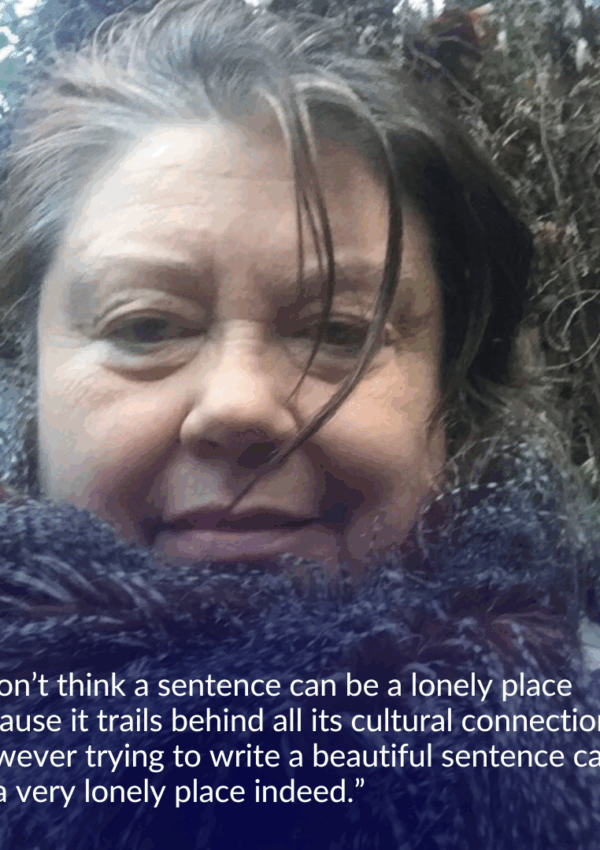My grandfather took me fishing when I was a little girl. I’ll never forget the thrill of catching my first fish and the utter horror at how that fish flopped around helplessly gasping for gill-filtered oxygen. Until the moment I pulled that creature from the lake, the fish had never taken notice of the water in which it thrived.
Like the fish, people usually don’t take much notice of the time and space in which they live—until the moment they are removed from it. We travel in order to surround ourselves with an environment that is somehow different than what we experience in our daily lives. Unlike the fish, we thrill in the unexpected. We are invigorated by the differences in geography, language, culture, food, and other expressions that set us apart. First, we observe the differences between what we had taken for granted at home and our new surroundings with sudden clarity. Then, we jump in with both feet and learn to navigate the sights, savor the unique flavors and scents, and commit to memory the fresh sounds of musical instruments we’ve never heard before.
A good travel writer is able to convey all these differences in beautiful, poetic language. The same principles that govern travel writing can be applied to writing time travel. Time travel fiction requires the writer to convey not only a different place, but also a different time, in such a way that the reader will become completely immersed in the non-present.
In my time travel short story, “The Ring O’ Callum Brodgar,” in order to give the reader a sense of Scottish language, it was important to represent a consistent written Scottish accent. Too much accent and the reader would drown in the dialogue. Too little accent and the characters from 18th century Scotland would sound contrived and sink like a two-dimensional ship. The trick was to provide just enough Scottish brogue to give the reader the sounds of dialect without the confusion of a foreign language.
The reader of time-travel fiction should be able to smell the driftwood as it slowly smokes caribou meat in the 17th century arctic and hear the whining sled dogs as they beg for meat scraps. Or inhale the floral scent of the gloved French duchess who will soon die from the poisoned perfume that is slowly sinking into her skin and feel the inevitable cooling of her skin as life quietly evaporates from her body.
Writers of time travel serve as literary liaisons between what has changed from the past to the present or what will change in the future. The reader must be able to see the differences through the writer’s lens. Time-travel fiction functions properly when the reader is so involved in the story that the present will seem unfamiliar in the moments just after finishing a chapter. Memorable time-travel stories will enable readers to think like a participant in the fictional world regardless of the time period, to be able to maneuver or adapt to the strange environment in the same way as the main character.
Our sense of time and space is unlimited in fiction. We can successfully travel to and from the present in a matter of paragraphs. We can navigate the future and manipulate the past in mere chapters. We can engage with historical figures and feel what they felt and then resurface in time to Skype with our editor. The dream isn’t over until we are safely back in our aquarium, drinking the oxygen that saturates the other world.
 Lisa Aldridge lives in the magical Ozarks. She is the author of The Dangerous Impressions Series (NA, Suspense/Romance) and The Ring O’ Callum Brodgar (To Love a Scotsman: an anthology Melange Books, 2017), Fiery Impressions (NA, Contemporary), Be a Grass Fire (Historical Fiction), The Death and Rebirth of Maria Sanchez (Literary Fiction), and The Caregivers (short story collection).
Lisa Aldridge lives in the magical Ozarks. She is the author of The Dangerous Impressions Series (NA, Suspense/Romance) and The Ring O’ Callum Brodgar (To Love a Scotsman: an anthology Melange Books, 2017), Fiery Impressions (NA, Contemporary), Be a Grass Fire (Historical Fiction), The Death and Rebirth of Maria Sanchez (Literary Fiction), and The Caregivers (short story collection).
Before becoming a full-time writer, Lisa was a cultural anthropologist and spent a lot of time in dusty rooms with Native American effigy pots and skeletal remains that were thousands of years old. They whispered intriguing stories to her imagination. She also taught Sociology, History, and English classes. But when she wrote a novel for her college students, she realized her passion for writing.
Lisa has an MFA from Lindenwood University and has published short stories, creative nonfiction, poetry, and flash fiction in various literary journals. She received the Samuel C. Dellinger Award from the University of Arkansas Anthropology Department and the Teaching in Excellence Award from Northern Oklahoma College.
She loves hanging out with her huge family! She also loves painting and dark chocolate. Someday she hopes to paint an edible landscape with melted chocolates.
Catch up with Lisa Aldridge:
Facebook: https://www.facebook.com/LisaAldridgeAuthor/
https://www.facebook.com/DangerousImpressions/
Twitter: https://twitter.com/LisaAldridge6
Website: http://aldridgelisa9.wix.com/lisa-aldridge
http://www.amazon.com/author/lisaaldridge
Goodreads: https://www.goodreads.com/author/show/12492132.Lisa_Aldridge
Nathan Bradley’s Facebook page: https://www.facebook.com/DangerousImpressionsBook1/
Publisher: http://www.fireandiceya.com/authors/lisaaldridge/dangerimp.html
Gravel Literary Magazine: http://www.gravelmag.com/lisa-aldridge.html (creative nonfiction memoir)
Blackfox Literary Magazine: https://www.blackfoxlitmag.com/2017/02/21/a-conversation-with-lisa-aldridge/
Lisa’s fiction appears in Black Fox Issue 9.



